
I have just finished the last of a delicious jar of sauerkraut which I made at a fermenting workshop. It was run by Christine McFadden who has a very sucessfull cookery school in her 17th century home in Dorset. Christine, who is also known as the Dorset Foodie, is a very experienced cook and teacher and has written several cookery books over the years. Her teaching is very clear, precise and reliable and she imparts a lot of practical information on a wide variety of cooking techniques. She lives in Littlebredy, one of the most beautiful villages in England. It is situated between Bridport and Dorchester and lies at the head of the Bride valley. As I made my way to her class I found myself driving through a maze of tiny winding roads and was very thankful to have a sat nav, it felt like I was driving back through time. This is pure Thomas Hardy countryside, an unspoilt green and golden landscape of emerald pastures dotted with yellow buttercups and ancient hedges.
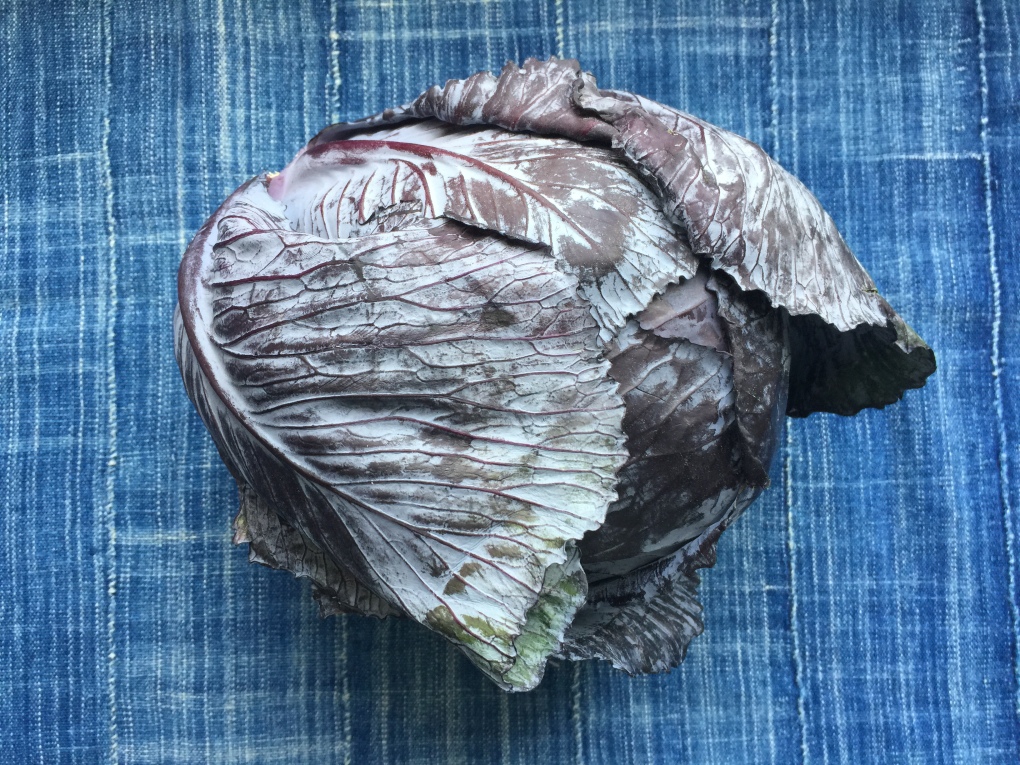
We spent the day preparing all sorts of ferments and pickles but the one that really stood out for me was a jar of sauerkraut made with red cabbage and juniper berries. It has to be one of the best sauerkrauts I have tasted. The flavour was delicious and it remained bright and crunchy for months. This is no mean feat! One of the things which is always challenging is to make a kraut which keeps a good colour without getting a soggy and an almost slimy texture as time goes on.
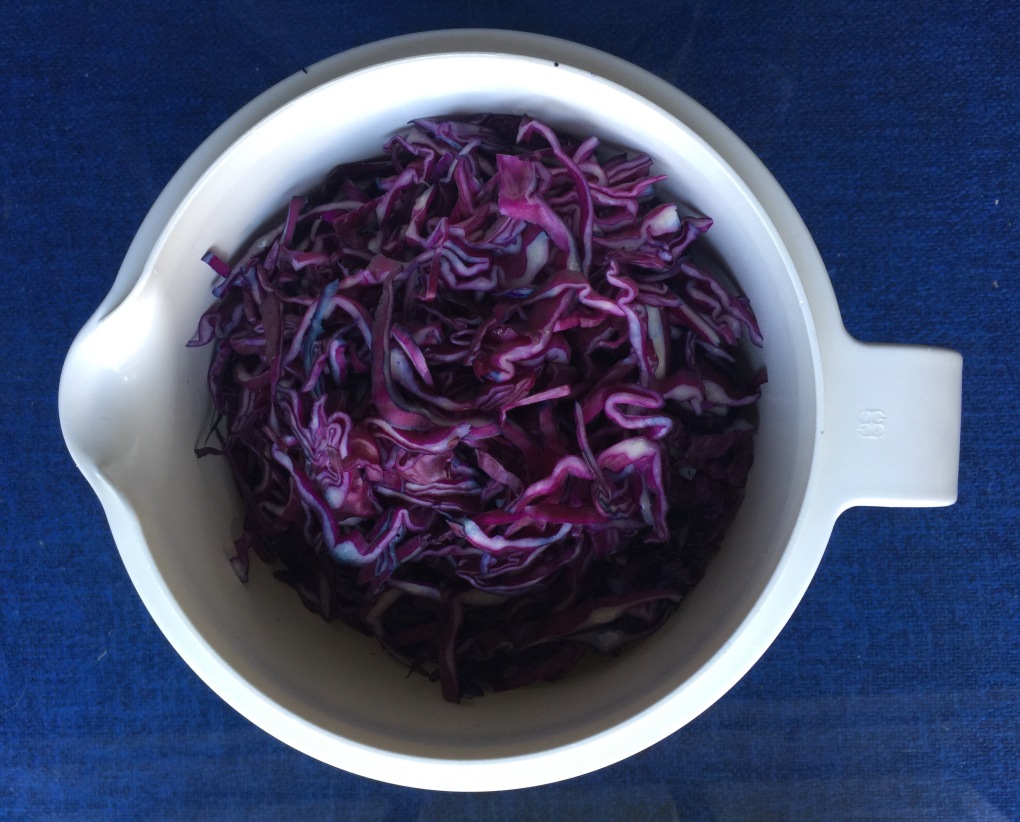
HOW LONG?
To get a great tasting sauerkraut there are quite a few things which will add to its success apart from a good recipe. Sauerkraut is like a fine wine which improves with age, this is not only for flavour but also to allow the good bacteria (which is so beneficial to our guts) to multiply as the jar ferments. Often the question asked is ‘how long to ferment?’. The answer to this is really until you like the taste of it since you will be the one eating it, but by giving it a longer time you will have a better result. The smallest of the bacterias are the L. mesenteroides who do most of their work in the first 3 days but really the minimum time is probably a week. The recommended time for it to be left on the counter by the purists is three weeks. Remember you can always put it in a cupboard if you don’t have space or would rather put it out of sight. Even though by day four the sauerkraut will have established some beneficial bacteria, I aim for at least three weeks as in this time frame your kraut will be given the opportunity to gain a wider spectrum of the beneficial bacteria and in my opinion a superior flavour.
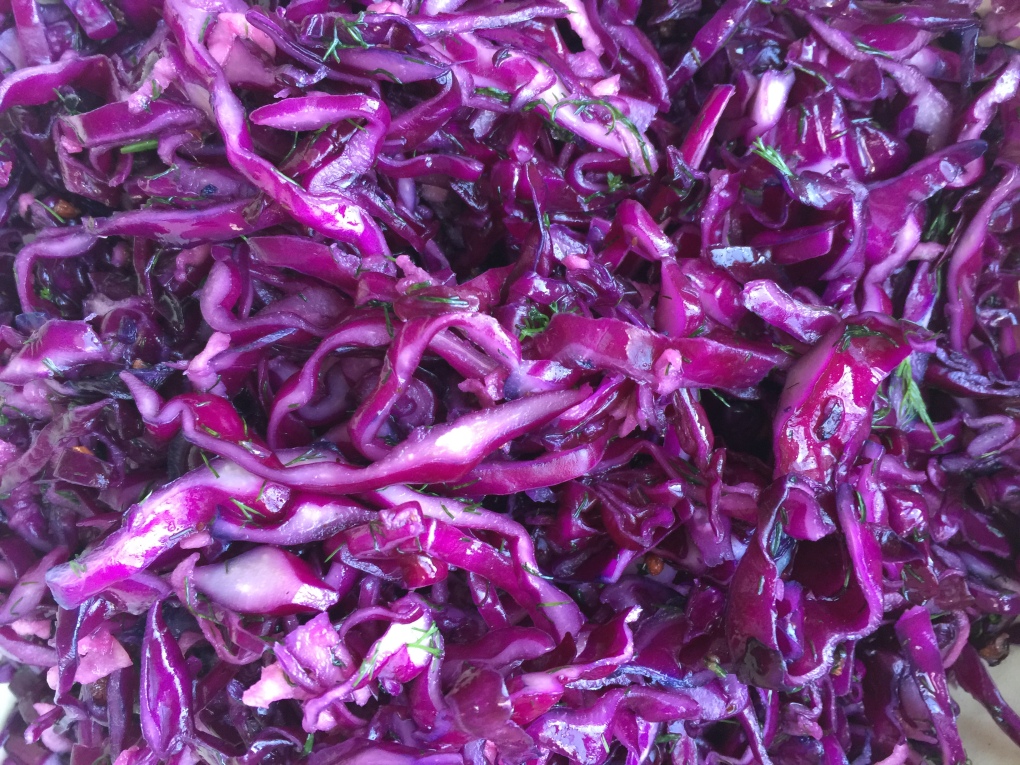
This is Christine’s recipe for making her small batch of ruby red sauerkraut. It’s an easy recipe to do if you are new to fermenting and have been put off in the past by the thought of chopping huge quantities of cabbage and also has the added advantage of not taking up too much space. I have found it to be much more manageable to pick up a few cabbages and make a couple of jars at a time. It means I make it more often and can play around with the flavours, it’s also handy to have a jar in the larder to give away as a present.
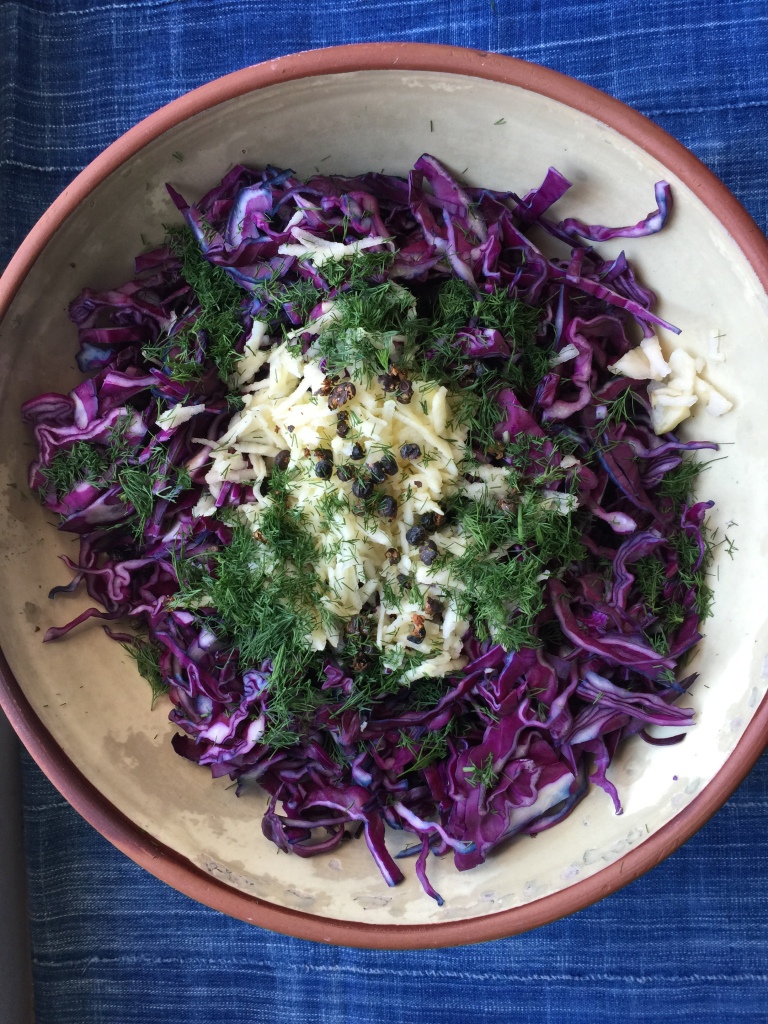
RED CABBAGE SAUERKRAUT WITH JUNIPER AND DILL
Enough for a 1 litre jar, or two 500 ml jars
1 red cabbage, weighing about 950g
1 crisp apple such as Granny Smith or Braeburn
18 g flaky sea salt such as New Maldon ( additive free)
2 tsp juniper berries, lightly crushed
2 tsp dill seeds ( I used fresh dill as I couldn’t find the dill seeds)
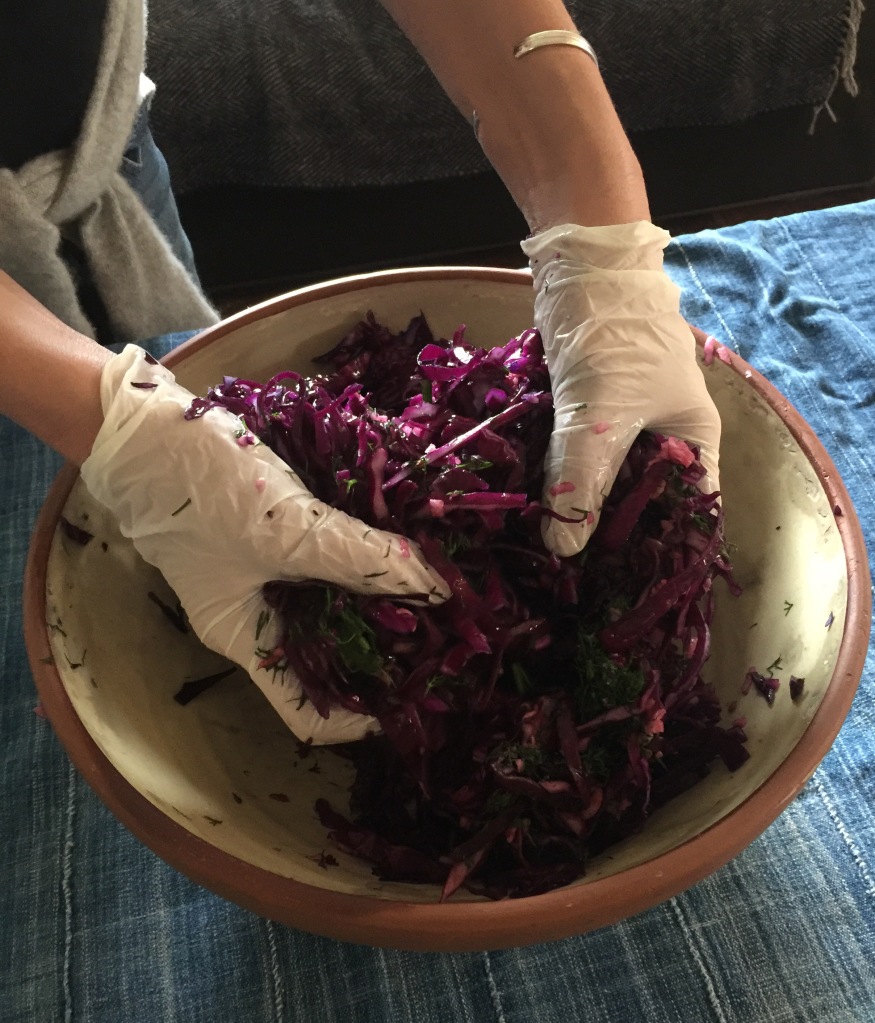
- Trim the base from the cabbage and remove the outer leaves. Save the outer leaves to cover the cabbage once it is in the jar.
- Slice the cabbage in half length ways. Slice each half lengthways into 3 segments. Cut out the tough core. Slice each segment crossways into thin shreds (3mm). You should have 800g-the right amount for a 1 litre jar.
- Put the shredded cabbage in a large shallow container. Spread it out, breaking up any clumps.
- Quarter, peel and core the apple. Grate the flesh coarsely and add to the cabbage , mixing well with your hands.
- Sprinkle with the salt, juniper berries and chopped dill or dill seeds. Mix well again using your hands.
- Massage and squeeze the cabbage to create the brine. Repeat the massaging every 10 minutes. After about 20minutes the cabbage will start to glisten as the salt draws out the moisture. Leave for 30 minutes to 1 hour, massaging regularly, until you can see a decent sized puddle of brine (about 7cm across) when you tilt the container.
- Meanwhile, wash and sterilise your jars. Allow to cool. You can also run them through the washing machine.
- Place a jar lid on one of the reserved outer leaves. Cut round the lid to make a circle that will fit snugly into the neck of the jar.
- Pack handfuls of the cabbage mixture into the jar, pressing down with your fist, or a smaller jar. You need to press very hard so that the brine rises above the top of the mixture and there are no air pockets. Pour in any brine remaining in the container. Make sure there is at least 2.5cm of space between the top of the cabbage and the top of the jar.
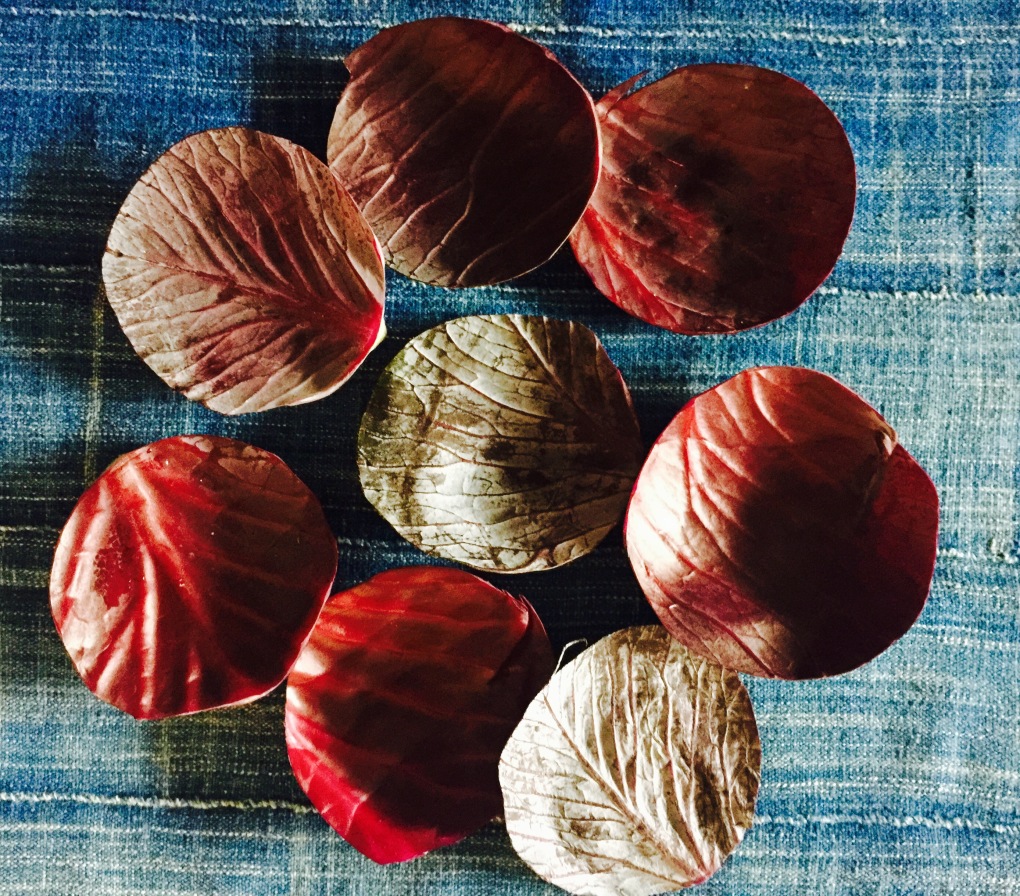
For more information contact Christine McFadden cookery courses at http://www.thedorsetfoodie.co.uk

9 thoughts on “Small Batch Ruby Sauerkraut”